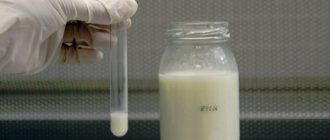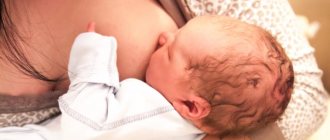Most young mothers, due to their inexperience, discover fragments of mucus in the baby’s stool, and begin to panic about what they personally did wrong. Or which of the ailments “clung” to the child. Experts are quick to reassure you that the presence of a small amount of mucus particles in the stool is considered normal, especially if this is observed in the first days of a baby’s life.
Reasons explaining the presence of large amounts of mucus
The small intestine secretes the right amount of mucus with the help of the endothelium, but it is practically invisible in the general stool. If inclusions of the substance are visible to the naked eye for a long period, most likely the child may develop serious health problems in the future.
There can be a large number of reasons why a child pooped with mucus, and this circumstance makes it difficult to quickly diagnose the disorders that provoked the manifestation. First of all, mucous secretions increase due to the activation of the endothelium. This usually occurs under the influence of active acids or alkalis that enter the intestines. The intestines are forced to respond by protecting the integrity of the organ walls by increasing the secretion of mucus. Mixed with food fragments and digested under the influence of enzymes, mucus comes out together with feces, but at the same time is easily distinguished from them in appearance, color and consistency.
Mucus discharge in stool - diagnosis depends on color and consistency
The presence of mucus in a child’s stool, especially under the age of one and one year, is a common occurrence. According to statistics, 80% of young mothers consult a pediatrician about the presence of pathogenic inclusions in the feces of their infants.
The very appearance of the mucous mass, its color and consistency indicate the nature of the disturbances in the intestines, suggesting a diagnosis.
Mucus is present in the feces of everyone - children and adults; its function is to facilitate the movement of feces through the colon and rectum, plus a protective function for the large and small intestines. But normally there should be no mucous masses visible to the eye .
The mucus produced by the walls of the gastrointestinal tract is transparent and viscous, like jelly. It is a mixture of leukocytes and epithelial cells. Transparent visible inclusions in children's stool often appear with poor nutrition and increased stress on the gastrointestinal tract.
If the baby is breastfed, it means that the mother ate forbidden foods (fatty, salty, sweet, fast food).
If the child is older, it means that a difficult-to-digest product has been introduced into his diet. When the diet is normalized, the problem disappears.
Also, threads of transparent mucous discharge in the feces occur with constipation in children. In this case, the mucus protects the vulnerable inner lining of the rectum from damage.
In addition to clear mucus, there are other colors of discharge in a child’s stool.
Greens
In a child, green stool with mucus indicates the active proliferation of pathogenic flora in the intestinal tract. Often the stool has a foul odor.
If the amount of such green impurities is small, the general condition of the baby is not disturbed; we are talking about mild dysbiosis - a violation of the optimal balance between beneficial and pathogenic flora.
And if a lot of green viscous mass, liquefied or in the form of threads, is separated with the feces, the baby does not gain weight well, eats and sleeps little, the temperature is elevated to subfebrile (37-37.5 ° C), bacterial colitis or enteritis may develop. A visit to the doctor is necessary.
Yellow
Yellow - indicates the presence of bacterial inflammation of the intestines. The more intense the color, the more leukocytes, indicating the severity of the process.
Sometimes yellow mucous inclusions are purulent impurities. If a month-old baby or older baby has yellow stools with mucus, consulting a pediatrician will help clarify the situation .
White
White - occurs due to irritation of the intestinal walls, as a result of which the epithelium exfoliates.
The reason is allergic reactions, atopic dermatitis, lactase intolerance, celiac disease - everything that is associated with a failure in the adequate functioning of the digestive tract.

Pink
Pink mucus is a dangerous sign. In the presence of damage, ulcers and erosions in the intestine, especially its upper sections, the mucus mixes with the blood, acquiring a pink tint.
The probable causes of feces with mucus in a child are allergic colitis, enterocolitis, Crohn's disease, and ulcerative colitis.
Black
Black - can signal internal bleeding in the stomach, esophagus, or small intestine. Passing through the entire gastrointestinal tract, the blood changes, becoming dark, mixed with mucus, forming black viscous threads or inclusions on top of the feces.
Taking certain medications can turn stool and mucus black. You need to see a doctor as soon as possible.
Red, bloody
Bloody mucus in a child’s stool looks like a translucent discharge with abundant red streaks.
Why does a child have mucus with blood in the stool: the causes of bloody stools are mechanical injuries to the rectum and sigmoid colon, for example, with frequent use of gas tubes and enemas.
With constipation, thick feces can injure the delicate mucous membrane, resulting in blood being released. Some diseases cause vulnerability of the inner layer of the intestinal tract - allergic colitis, cow's milk protein allergy, UC (ulcerative colitis), Crohn's disease.
Abundant or scanty
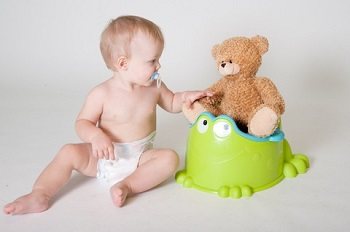
A lot of mucus in a child’s stool can appear when consuming medicinal syrups with simethicone (Bobotik, Sub-Simplex, Espumisan), a runny nose, or improper introduction of complementary foods.
The more mucous masses in the stool, the more irritated the intestines. A visit to a pediatrician or gastroenterologist followed by tests can help clarify the situation.
Scanty mucous impurities can signal constipation and malnutrition. If such impurities appear rarely, do not have blood inclusions, have an unpleasant odor, and the baby does not complain about anything, you need to adjust the diet , limiting dairy, flour, and sweets.
Thick or liquid
The consistency of mucus in a child’s stool can be thick - in the form of dense jelly or long threads or strands; liquid - similar to a watery, slightly stretchy mass, like snot.
Thick - can signal the presence of parasites, especially if its color is white. You need to undergo tests, and based on the results, treatment will be prescribed.
A child develops loose stools with mucus due to lactase intolerance and pancreatic insufficiency. If, instead of feces, completely liquefied mucus with an atypical odor is released, this is a sign of an acute intestinal infection.
What should stool look like? Is mucus in a child’s stool normal? Watch the video:
Mucus in the stool of newborns
An increased amount of mucus in the stool can be observed in children from the first weeks of their life. And if an infant poops mucus, then there is nothing wrong with that. This can be explained very simply: the digestive organs have not yet had time to adapt after being in the womb, so disruptions in their functioning are common. Along with food, bacteria with different effects simultaneously enter the baby’s intestines. By settling in the digestive organs, they provoke increased production of mucous tissue. And when the situation becomes stable, the excess mucus disappears.
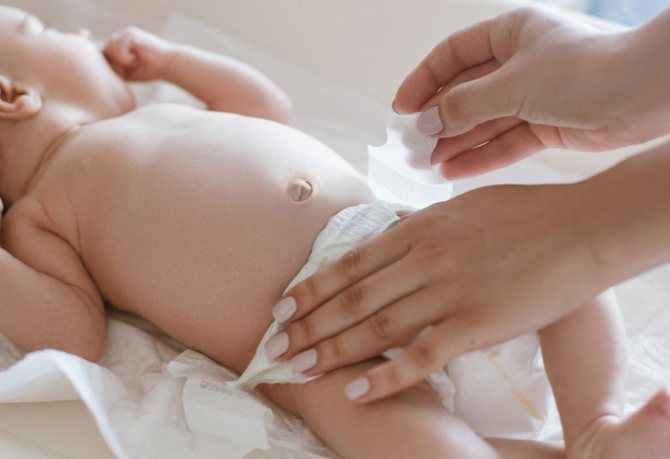
Lactase deficiency
With lactase deficiency, colic is observed.
This condition is characterized by a decrease in the enzymatic activity of lactase in the intestine. This pathology can occur in a latent form and overtly.
There are congenital and acquired forms of the disease. Babies with lactase deficiency develop the following symptoms:
- pain and colic, flatulence;
- baby cries after feeding;
- frequent bowel movements;
- the character of the stool is foamy, fetid, the smell is sour;
- developmental delay of the baby.
In this case, the doctor will order a stool test for carbohydrates. And based on the results, he will suggest a treatment option. Therapy begins with the mother if the baby is breastfed.
The goal is to reduce the amount of carbohydrates in milk and add lactase preparations during feeding. For artificial people, a specialized mixture is selected.
In this case, the amount of carbohydrates is monitored every week.
Factors that provoke mucus
If the situation has been observed for a long time, and already the child pooped mucus at 4 months, and the amount of mucus not only does not decrease, on the contrary, the inclusions become larger and are more clearly visible, then the following factors may be the reason for this:
- Food spoilage. Young mothers often use expressed milk to feed their babies, but they forget that the product can easily spoil.
- The reaction of the child's body to other types of mixtures.
- Failure to comply with the diet of a nursing mother.
- Negative effects of microorganisms that provoke the development of dysbacteriosis.
- Lactose intolerance.
- Fungal diseases transmitted by the mother to the baby at the time of birth.
- Reaction to early transition to bait.
In children after one year, the main reason for the appearance of mucus in the stool is the effect of dysbacteriosis provoked by any infection. After all, at this age, babies can put any objects they like into their mouths.
When a baby has diarrhea interspersed with mucus
Dysbacteriosis is the main cause of mucus.
Children often experience diarrhea, which contains a certain amount of mucus that is visible to the naked eye. In this case, stool often has a normal color and a familiar smell. Pediatricians believe that the main reason for this phenomenon is the development of dysbiosis in the child. To make sure of this, samples of biomaterial are taken from the baby for testing. If the test data has confirmed the preliminary diagnosis of dysbiosis, do not despair and give up. Everyone knows that the manifestation of dysbiosis in a child’s body is not the development of a disease, but rather the result of a disturbance in the intestinal microflora. In order to rid the baby’s body of dysbiosis, he is prescribed special probiotics and the correct diet. In this case, proper nutrition is required not only for the baby, but also for his mother.
Treatment of dysbacteriosis must be carried out under the supervision of a physician. You should not prescribe your baby any medications on your own, as this can cause the development of various pathologies in his body. It is especially dangerous to give a child completely unfamiliar drugs or probiotics to treat diarrhea with mucus. Each drug has its own side effects, which can sometimes cause the development of serious and incurable diseases in the body. Under no circumstances should you stop breastfeeding your baby during this period. It is the mother’s breast milk that contains all types of immune compounds necessary for the child’s body, which are not yet synthesized in the baby.
Breastfeeding will help the baby build its own immunity and resist various diseases.
If it is impossible to obtain a consultation with a pediatrician, the child is allowed to take the drug “Smecta”. This drug should be taken in the amount of one sachet per day. The course of taking this drug is calculated from 3 to 7 days. Smecta powder is dissolved in a certain amount of water and given to the baby. The drug should be taken in parts during breaks from feeding to feeding. Thanks to the active components of Smecta, all harmful compounds that are formed as a result of the activity of the baby’s digestive system are removed from the intestinal environment. Taking Smecta is absolutely safe for the child’s body. If an infant is taking additional medications, they should be taken after two hours from using Smecta. If the baby is given an increased concentration of the diluted drug “Smecta” in water, this can cause constipation in the body. The action of “Smecta” is always positive and pleasant for the baby’s body.
Read: Treatment of oral thrush in adults: what causes it and how to treat it
Other causes of mucus
If a child pooped mucus at 2 years old, then dysbacteriosis may also be the cause. But even in older children, who are already good at distinguishing the objects with which they play, particles of mucus (lumps) in the feces are not a rare occurrence. In this case, the cause of the manifestation may be:
- poor nutrition;
- allergy;
- side effects of medications;
- worms;
- colds and viral diseases;
- prolonged constipation;
- hypothermia of the pelvic organs.
In rare cases, the development of autoimmune pathology or the presence of more serious diseases of the gastrointestinal tract may be observed. Severe illnesses in children are considered rare. However, diseases such as oncology, intestinal obstruction, colitis, cystic fibrosis, and Crohn's disease can cause an increase in mucus in the stool.
How many times should a baby have bowel movements?
When breastfeeding, the frequency of bowel movements can reach ten times a day.
A newborn must empty his own bowels throughout the day. This helps to remove undigested residues and the resulting not entirely useful compounds from his body. Some babies can walk “big” several times during the day, while others two or three times throughout the week. At the same time, both the first and second groups of babies feel good. If the baby is feeling well, he has a cheerful mood, a healthy appearance and the correct stool consistency. When the stool looks right, the baby is not whiny, but is absolutely calm. The baby's stools are soft, even if not frequent. It is advisable to exclusively breastfeed infants from 3 to 6 weeks of age. In this case, the frequency of bowel movements in the child will be quite frequent and can reach up to ten times during the day. If due to some circumstances this type of feeding is not possible, then the baby is given formula. In this case, the purity of the body’s stool will be somewhat lower.
Babies who have crossed the line of six weeks of age poop less often with any type of feeding. In some cases, the baby may not poop for two days in a row without showing any signs of distress, and then will have bowel movements normally again. In this case, there is no need to panic unnecessarily, as everything is in order. When breastfeeding a baby, mother's milk is completely digested and absorbed, which is very good for the child's body. During artificial feeding, not all components of the mixture are absorbed by the intestinal villi, forming feces. In such cases, the baby's body must empty itself at least once within twenty-four hours, otherwise constipation may occur.
Read: White-gray coating on the tongue as a symptom of the disease?
Read along with this article:
- Mucus in a child's stool - why it might appear
- There is a lot of mucus in the baby’s stool: what does the symptom mean, why...
- Stool with mucus is a cause for concern
- Green poop in a baby: causes, methods...
- Mucus in baby's stool: normal or pathological
- White mucus in stool: symptoms and danger signs, possible diseases
- Why does a child poop often and how to help him in this case?
- Green feces in infants as a symptom of dysbiosis?
- Mucus in the stool of an infant, dysbiosis and mucus in the stool
Stool norm for children

If a month-old baby poops mucus, but his general condition is fine, then this is considered normal. The norm of stool for children, starting from the age of one, is as follows:
- 1-3 days after birth. Feces resemble a tar-like mass, odorless, black-green in color.
- 3-4 days. The consistency of stool is liquid lumps with mucus particles. The substance is more reminiscent of a porridge-like mixture with different colors, in which there are dark green lumps with watery inclusions.
- More than five days. The stool becomes yellow with a greenish tinge, mushy feces. The frequency of bowel movements usually corresponds to the frequency of feeding the baby. In the stool, lumps of whitish color may be observed, giving off a sour odor.
- In the future, the presence of mucus should not differ greatly in volume and color from the total mass of feces.
With artificial feeding, the consistency of the stool usually looks thicker, but when changing bait, inclusions of mucus may be observed. The color of the masses is also different; greenish-brown or dark yellow mushy feces are observed.
Diagnostics
To determine the reason why mucous stool appears in a baby, it is necessary to take tests for intestinal microflora. The doctor, based on the symptoms, prescribes tests for eggworm, dysbiosis, allergens, carbohydrates, and you will also have to do a coprogram. The technique for collecting baby stool is as follows:
- Prepare a special container, ensuring its sterility.
- In the morning (or the night before), use a spatula to collect feces from the surface of the diaper (not from the depths), trying to get into places with small patches of mucus. If the stool is too liquid, you can lay down a medical oilcloth and wait until the baby defecates on it.
- If the analysis took place in the evening, you should place the box of stool in the refrigerator, and in the morning, attaching a tag with the child’s name and surname, take it to the laboratory.
What can the consistency and color of stool indicate?
A peculiarity of mucous inclusions is that they may differ in color. This factor is always taken into account by specialists when diagnosing the cause that created the appearance of a substance in the feces. Here's how to determine the type of deviation by color:
- Black or red-brown. These shades indicate that there is internal bleeding.
- Red with traces of blood. If a child poops mucus with blood, this indicates that the manifestation may be caused by mechanical injuries to the gastrointestinal tract. This often happens when an enema is used ineptly.
- Pink. If, in addition, streaks of blood are observed, then the appearance of such mucus may indicate the development of Crohn's disease, the presence of erosive cracks or the formation of ulcers on the surface of the gastrointestinal tract.
- Green. If a child poops green mucus, this usually happens when there are colonies of fungal microorganisms in the gastrointestinal tract that reproduce quickly.
- White. In these cases, epithelial detachments become noticeable, which are usually observed during an allergic reaction that provokes irritation of the inner lining of organs.
- Yellow. The presence of inflammatory processes is visible on the face. The reason for this is the presence of an increased number of leukocytes in the mucus.
If the consistency of the mucus has a density more like lumps, and the appearance of the stool resembles jelly balls, these are signs of the presence of parasitic organisms. Liquid mucus indicates problems associated with pancreatic dysfunction and lactose intolerance.
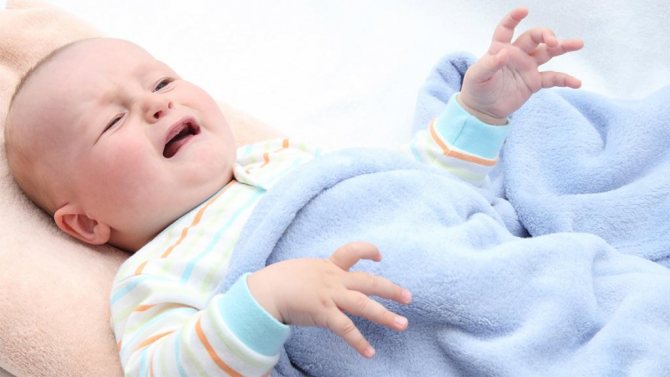
Errors in nutrition
The color of the stool depends on the feeding of the baby.
It is the mother who makes mistakes in choosing a diet for both her own and her baby. Only in formula-fed children is the pediatrician responsible for the wrong choice of formula.
Read: Green stool in a 1 year old child: how dangerous is it and what to do?
But even in this case, the doctor cannot predict how the baby’s body will accept the proposed replacement of mother’s milk. In this case, the mother should also be attentive and if any negative reactions occur, contact the pediatrician.
Currently, it is recommended to use mixtures containing probiotics. They allow you to improve the process of nutrition absorption.
If the baby eats mother’s milk, then the woman should pay more attention to her own diet and adjust it. Mucus inclusions appear in toddlers if the mother eats high-calorie foods - full-fat milk, nuts - and allergenic foods - chocolate, citrus fruits, strawberries.
During the lactation period, especially in the first months, you should adhere to the principles of a healthy diet. New foods should be introduced gradually, observing the baby's reaction.
Another common mistake is a violation of the ratio of foremilk and hindmilk. The first fraction is more liquid. It is rich in proteins and lactose and functions as a drink. Hind milk is fattier. Therefore, to normalize the toddler’s feces, the duration of feeding should be from 15 to 20 minutes.
After the introduction of complementary foods, the appearance of mucus indicates that the product has not been fully absorbed. If there is not much of it, then you should not immediately cancel vegetables or fruits. Only a violent negative reaction from the body is a reason to wait with the introduction of complementary foods.
Symptoms
If a child poops clear mucus, but this phenomenon occurs infrequently, and the child is not bothered by abdominal pain, and he himself feels normal, there is absolutely no reason to worry. However, the frequent appearance of mucus with accompanying symptoms indicates that the child has health problems. The symptoms that are most often observed in such cases are as follows:
- frequent constipation and diarrhea;
- poor appetite;
- increased flatulence;
- the baby is bothered by abdominal pain;
- the child cries often;
- elevated temperature, the child is shivering or feverish;
- fatigue, lethargy, drowsiness;
- the child often asks to go to the toilet, but the urge to defecate is false;
- nausea, vomiting;
- persistent runny nose, in which the child swallows secretions, which leads to mucus entering the stomach;
- cough with sputum (the mechanism of sputum entry is the same).
Experts warn: in case of excessive vomiting, elevated temperature, or the appearance of blood clots in the stool, the child should be immediately hospitalized.
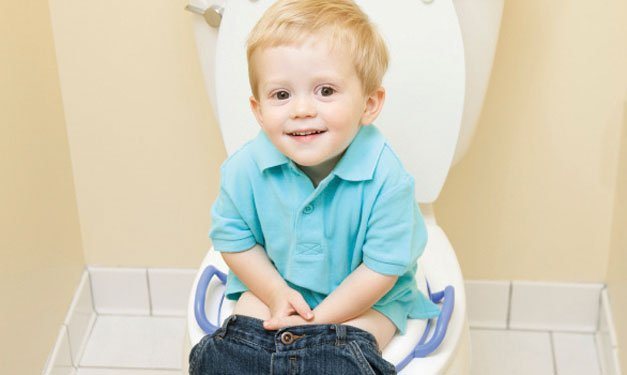
Causes of mucous stool
- Appears in small quantities when there is a load on the baby’s intestines. This load is especially strong in the first two months, when the newborn’s digestion is just adapting to new food. Mucus helps digest food;
- The introduction of complementary foods often results in the appearance of a small amount of mucus. Abundant mucus appears with early or improper complementary feeding. On the advice of pediatricians, the first complementary feeding of a baby should be introduced no earlier than 5-6 months after birth;
- Runny nose due to flu or other colds. The child swallows a particle from the nasal cavity, which enters the intestines. The mucus in the stool will be clear;
- Long intervals between feedings and large portions stimulate fermentation in the baby's body and produce mucus. Feed your baby at least once every two hours and four times at night. Doctors recommend feeding a newborn on demand and not forcing him to eat if he doesn’t want to. The child releases the breast on his own when he is full. If your baby requires breastfeeding more often, feed more often. In addition, frequent application perfectly stimulates lactation;
- With artificial or mixed feeding, the cause of mucus is often an unsuitable milk formula. Doctors advise breastfeeding a newborn only, but sometimes the mother does not have this option. For which formula to choose for your baby, read the article “Rules of mixed feeding”;
- Poor nutrition for a nursing mother. Many foods strongly irritate the newborn’s intestines and lead to changes and disturbances in stool. In addition, poor nutrition leads to allergies and other negative consequences. To avoid problems, read the article “How to eat properly for a nursing mother”;
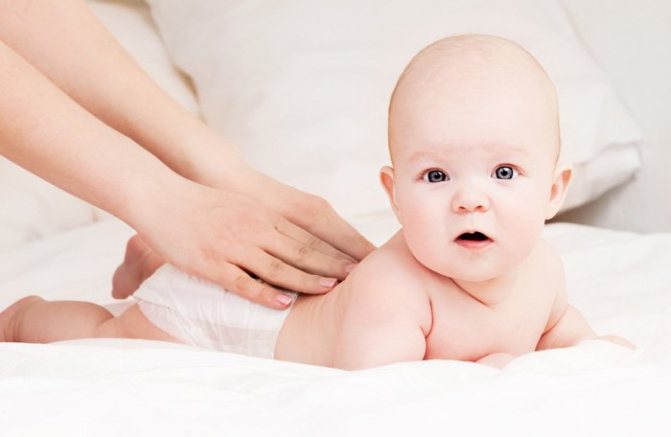
- Medicines taken by a nursing mother. The components of the products penetrate through breast milk and into the baby’s body. The compositions of most medications negatively affect the condition of the baby and the course of lactation. Therefore, when breastfeeding, you need to be very careful when taking medications, carefully study the instructions and be sure to consult a doctor before use!;
- Problems with breastfeeding and improper nipple latching lead to the baby receiving only foremilk. Change breasts less often when feeding. The best option is to switch when the baby has completely sucked one breast. This way he will receive the necessary portion of hind milk, the lack of which often causes green stool with mucus;
- Atopic dermatitis is an inflammation of the skin that is caused by allergies. Sometimes irritation, redness and peeling are accompanied by mucus in the stool;
- Intestinal obstruction, which occurs due to compression of the intestine and causes severe abdominal pain, vomiting and profuse regurgitation in infants, watery stools often mixed with blood. In this case, the baby needs immediate hospitalization and specialist help;
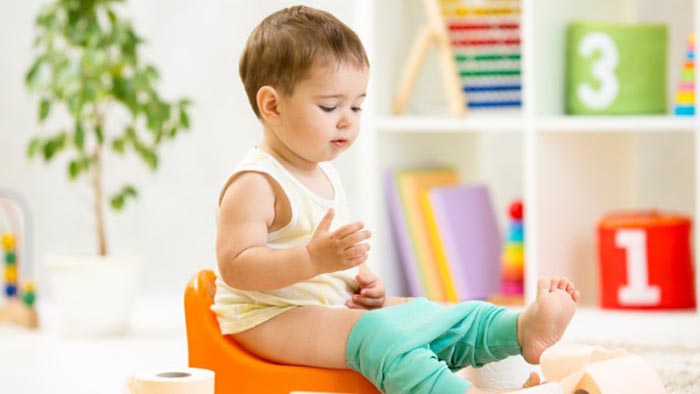
- Acute intestinal infections are the result of infection with fungi, bacteria and microbes. Newborns are difficult to tolerate such diseases. They are accompanied by frequent diarrhea and copious mucus clots. In addition, intestinal infections are characterized by fever and vomiting, weakness and refusal to eat, and dehydration. In this case, medical assistance is also necessary;
- Gluten deficiency (celiac disease). Gluten often causes allergies in young children, especially after complementary feeding. Then a special diet is introduced and foods containing gluten are excluded from the diet. These are pasta and bread, semolina and barley porridge;
- Dysbacteriosis or intestinal disorder is a common disease among children. In mild forms, the baby suffers from bloating, constipation or diarrhea, and colic. There is a small amount of mucus in the stool. Read here what to do and how to help your baby with dysbiosis.
The presence of mucus in various disorders of the gastrointestinal tract
If a child poops with mucus, its presence can be observed due to various malfunctions of the gastrointestinal tract. The most common ones are:
- Diarrhea. In this case, the presence of mucus against the background of diarrhea can provoke dysbacteriosis. This especially often occurs during the treatment of various diseases with the help of medicinal substances that destroy the microflora of the child’s body. Taking antibiotics most often has a similar effect, not only disrupting the balance of microelements involved in the digestion of food, but also causing diarrhea.
- Constipation. This condition is one of the symptoms indicating malfunctions of the digestive system. In this case, the mucus may have either a transparent white color, indicating problems with the removal of hardened feces, or pale pink, which can occur due to mechanical destruction of the walls of the gastrointestinal tract.
In both cases, the appearance of mucus is a kind of reaction of the digestive organs, preventing their rapid destruction.
To the doctor!
Sometimes the baby needs medical attention. The following symptoms indicate serious abnormalities in the development of the infant:
- Diarrhea with vomiting and mucus;
- Fever;
- Blood in the stool indicates serious problems. This may be dermatitis, protein allergy, inflammation and intestinal fissures;
- Defecation occurs more than 12 times a day;
- The baby is not gaining or losing weight. You can find out how to calculate the correct weight of a child under one year old here;
- Copious mucous stools; bad breath;
- Urination occurs more than 6 times per knock and is accompanied by an unpleasant odor;
- White chair;
- Green, foamy stool with a sharp, sour odor. By the way, an ordinary green stool if the baby is feeling normal is not a deviation;
- Brown, yellow or green stools with copious mucus indicate a cold in the infant;
- Foamy stools appear due to increased gas formation and severe colic. Abundant foam can be a sign of pathology and problems in the functioning of the body. The stronger the foam, the more serious the problem.
A properly composed menu for a nursing mother will help to improve the baby's stool. Dried fruits and fermented milk products and plenty of warm drinks contribute to normal digestion. The norm for a nursing mother is 2-3 liters of fluid per day! In addition, you can massage your baby's tummy before feeding using light strokes and circular movements. This will reduce colic and improve digestion.
Subscribe to our VKontakte group
What is required from parents
Having discovered unusual lumps of mucus in the stool, parents should carefully study the child’s further behavior, observing his appetite, sleep, and periodically measuring body temperature. Any deviations indicating that the baby has health problems become a reason for parents to seek help from medical professionals.
Parents often make the mistake of starting to treat their child on their own, without firm confidence that they have figured out the reasons for what is happening. This should not be done under any circumstances, since only the doctor decides what treatment should be prescribed to the child. This is done after the cause is diagnosed by studying the tests.
Diarrhea with mucus
Diarrhea with mucus is a cause for concern
Particular attention should be paid to the moment when a child experiences diarrhea with mucus. This is the main symptom of dysbiosis, which appears mainly after taking strong antibiotics that have completely killed the beneficial intestinal microflora. To find out for sure whether a child has dysbiosis, it is necessary to undergo special stool tests, which will show the content of beneficial and harmful bacteria. It is not uncommon when there are practically no beneficial bacteria, and it is during this period that the child begins to experience diarrhea with mucus, which is sometimes accompanied by sharp pains in the stomach. After the pain subsides, the child goes to the toilet.
In most cases, the urge to defecate appears literally ten minutes after eating, and the child will strain as if the stool is not liquid, but very hard.
It must be said right away that you should not be afraid of dysbiosis, since it can be controlled with the help of prebiotics, which will help restore the intestinal microflora and improve your general condition. In addition, the inclusion of fermented milk products in the diet will also have a positive effect and affect the rate of intestinal recovery. If we talk about medications, then if diarrhea with mucus appears, it is necessary to give the child Smecta. It is an excellent absorbent and removes all harmful substances, and also helps strengthen the stool. The dosage depends on the age of the baby.
Read: Gall bladder with a bend in the neck: features of the disease, treatment
If, in parallel with Smecta, the doctor prescribed some other drugs for the treatment of dysbiosis, then they should be given strictly two hours after taking Smecta, since the drug can simply be eliminated without starting to act. If diarrhea with mucus is repeated many times, and the child is small enough, it is better to call an ambulance or go to see a pediatrician, who will recommend medications that can help alleviate the child’s condition.
Diagnosis methods
Abundant mucous inclusions are clearly visible upon examination. Their consistency, color, quantity and other features are also determined. If a child poops with mucus, then before going to the doctor it is necessary to examine the stool to explain to the specialist in more detail the changes that are occurring. In any case, the doctor will offer to study mucus secretions using laboratory equipment, so you need to be understanding of his requirements.
When studying tests in a laboratory, you need to provide the material that will be studied, more precisely blood, feces and urine. If specialists deem it necessary, a set of additional studies may also be prescribed: x-rays, ultrasound.
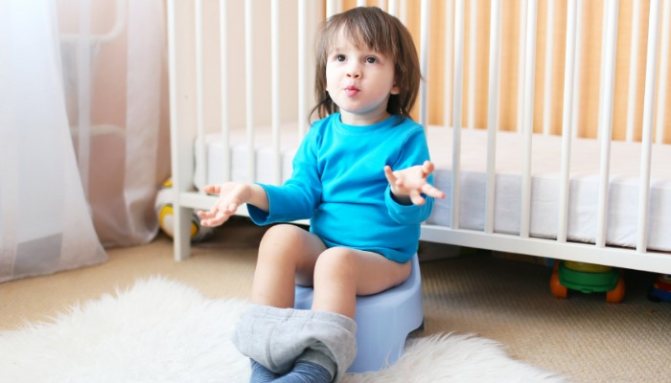
Drug treatment
Treatment with medications is prescribed after diagnosing the causes of mucus:
- When diagnosing ARVI, influenza, bronchitis, pneumonia and other viral diseases, the emphasis when choosing the right medicine is on antiviral drugs and substances that reduce cold symptoms: nasal drops, rubs, cough syrups, antipyretics, gargling solutions.
- When exposed to an infection, a course of treatment is prescribed, where the main medicinal substances are antibiotics and rehydrates. Medicines may also be used to treat various viruses.
- When diagnosing thrush, antifungal drugs must be used, and the recommendation of specialists is an important factor here.
- Inflammatory processes and pathological changes are treated with glucocorticoids and sulfasalazines.
- Erosive destruction and ulcerative processes are treated with drugs that reduce swelling and have wound-healing properties. Along the way, if necessary, painkillers are also prescribed.
- For complex diseases (such as pancreatitis), medications containing enzymes are prescribed - Pancreatin, Creon.
Traditional methods
In some cases, doctors advise not to forget about traditional medicine. With the help of herbal teas, tinctures of honey with black radish, coughs, runny nose, and colds are treated.
In the treatment of dysbacteriosis, decoctions of oak bark, chamomile, and cinquefoil have proven themselves to be effective. Honey, diluted with carrot juice, and garlic work well against worms. A tincture of chamomile flowers and dill seeds works well for indigestion and frequent constipation.





